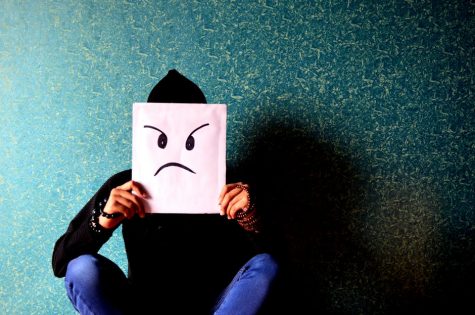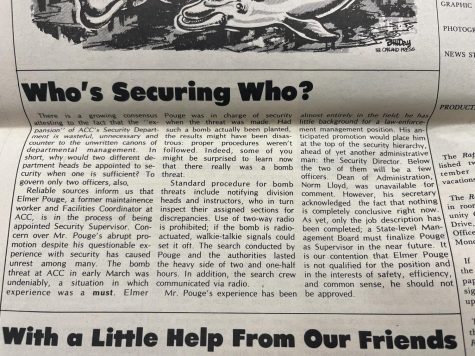Student Opinion: The World Should Stop Making Plastic Foam
Do We Really Need Styrofoam?
Image via Shutterstock/Iron Strike
The world creates over 14 million tons of Styrofoam every year, because plastic foam takes approximately 500 years before it naturally decomposes, Styrofoam that is discarded doesn’t go anywhere. The only option to reduce the amount of Styrofoam in the world is to stop the production of plastic foam.
The issue of Styrofoam pollution is something that cannot be solved in hindsight – much of the world’s litter is already composed of plastic foam. Through government legislation to ban the sale and use of foam in businesses, individual diligence (in personally reducing Styrofoam consumption) must be adhered to. As well as increased efforts to properly deal with preexisting foam that has been through circulation, the amount of Styrofoam waste may be permanently reduced.
Because of the outrageous time Styrofoam takes to decompose naturally, society should make efforts to minimize or halt the use of plastic foam to stop introducing it as waste.
Styrofoam is a popular brand of polystyrene plastic that is used in items such as: single-use food containers, shipping materials, and insulation. The term “Styrofoam” is the trademarked name for a specific type of foam product, Dow Chemical’s foam insulation. Dow’s insulation and other foam products are actually a type of plastic known as “polystyrene, or plastic #6”
Because it is light weight, durable and cheap to produce, Styrofoam is extremely prevalent all over the world. Styrofoam is also costly to recycle properly. Because of this, Styrofoam is very unfriendly to the environment, mostly due to the bulk of its waste is stored in landfills or discarded as loose garbage.
The process to produce Styrofoam is harmful to the quality of the atmosphere as well. Many cities across the United States, especially cities in California, have opted to ban Styrofoam. As Styrofoam bans sweep the United States, many other problems surrounding the environmental and economic concerns of its substitutes such as papers and other plastics come to light.
On the upside, plastic foam has been revolutionary for the global economy, providing jobs to those who produce it as well as a cheap material for businesses to utilize. Due to its advantages, compared to the disadvantages that many alternatives to the plastic foam bring, many groups object to the bans of Styrofoam.
One article by William F. Shughart II and Katie Colton of Independent Institute proposes that “There’s little difference between throwing away a Styrofoam cup or a paper one.” The study that Shughart uses to back this claim only supports that the trash generated by humans would not be affected by switching the material of the cup. Obviously, humans would still use the same number of cups, but presenting this as a reason to continue using Styrofoam over alternatives is a fallacy.
Shughart also states that, “On average, 2.3 million tons of Styrofoam end up in landfills every year in the United States. That is less than 7 percent of the nearly 33.54 million tons of plastic Americans discard annually.”

Styrofoam and plastic litter piles grow ever larger.
This statement seems to imply that because the percentage of Styrofoam waste is lower than other plastic waste, it is not enough to matter, and nothing should be done about the issue. Just because Americans discard 33.54 million tons of plastic each year, does not make 2.3 million tons of Styrofoam any less problematic.
The problem in the waste of Styrofoam is that it is difficult to recycle and does not break down naturally. Paper, however, will decompose at a much more agreeable rate, even if discarded in the same quantities of Styrofoam. Despite requiring trees to create, the 20-year decomposition period of a paper cup causes it to be far more favorable than the minimum 500 years a Styrofoam cup takes.
Stating that Styrofoam takes a minimum of 500 years to decompose is only an estimate. Styrofoam was recently invented within the past 100 years. No Styrofoam has existed long enough to even come close to naturally decomposing. If Styrofoam was used by Leonardo Da Vinci, the original foams he would have had would only be beginning to decompose today.
The real issue behind Styrofoam waste is not the omission released during its manufacture, or the materials used to make it, but the fact that it has the potential to lasts centuries.
Styrofoam litter piles up in cities especially. So, it is reasonable that many government officials have an obligation to, assuming their voting citizens favor it, ban Styrofoam products. So far, several cities across various states in the U.S. have either banned or are considering a ban on plastic foam.
Colorado currently has zero cities within the state that have banned or are considering banning Styrofoam. While some may view it as drastic, urging public officials in cities or counties in Colorado to consider Styrofoam bans or restrictions is a step in the right direction that can be taken at a local government level. The current governor of Colorado as of 2019, Jared Polis, would be the foremost person to be petitioned about a possibility of a ban on Styrofoam.
Even after Styrofoam degrades, as it breaks down when in contact with UV light until it turns into powder, it is never actually gone. Animals will either eat Styrofoam directly, which will clog their digestive systems and eventually kill them, or they will drink it when it pollutes a water source in powder form. If a fish happens to consume some Styrofoam, it is only a matter of chance before a human is also consuming Styrofoam.
Cleaning up Styrofoam litter is therefore much more difficult to deal with than other plastics and papers that don’t break down into what is smaller than sand. Styrofoam doesn’t just create loose garbage around the world that people must clean up – it becomes an environmental contaminant that irreversibly harms ecosystems. Styrofoam litter that can still be cleaned up is in no short supply, either. California, the state which has the most city and county bans on Styrofoam in the United States, collects about 520,000 tons of plastic foam per year to be placed in landfills
Collecting all the garbage is very expensive, and in Real Cost of Styrofoam it was estimated per year: “…it costs approximately $295 million to clean up Styrofoam trash from our highways” Just as plastic foam itself becomes waste, so does the money that is washed away to clean it up. Saving a few dollars on materials is not worth coating the places we live and our environments with immortal garbage.
With the high cost of cleaning up the planet, it is a wonder how so many jobs would only be lost if the production of Styrofoam stopped. In Surprise! Banning Styrofoam Creates All Kinds of Problems Including Environmental Ones, the authors William F. Shugart and Katie Colton claim, “The direct and indirect impacts of prohibiting EPS manufacturing in New York could eliminate 2,000 jobs and $400 million in economic activity. In California, an estimated 8,000 jobs could disappear”.
However, the project titled Real Cost of Styrofoam from Saint Louis University estimates the social cost of Styrofoam production to be $4.9 billion per year. This number is centered around the costs to human health caused by greenhouse gases and water treatment. As the production of Styrofoam degrades the quality of both air and water for everyone living in the area.
These environmental costs, which consist of cleanup operations of different areas, are estimated to be $1.96 billion annually.
Finally, health costs, which are attributed to leukemia caused by benzene and styrene exposure, is estimated to be $108 million per year. In comparison to the total of nearly $7 billion the economic cost of a few thousand employees seems rather small and meaningless. People can find new jobs, but we can’t get rid of the new Styrofoam.
Regardless of recycling capabilities and government legislation, a reduction in Styrofoam use can always be made at the level of the individual. If you avoid using Styrofoam products, not only will you be doing a part in maintaining the health of the planet, but also maintaining your own personal health as well. Benzene and Styrene are both cancer causing agents linked to leukemia. When you use a Styrofoam food container, especially if you store hot drinks in or microwave the container, you are consuming styrene that has leached out of the packaging and into your food.
While there is a very low maximum tolerable daily intake of styrene for humans, it is still recommended to not consume styrene at all. Just as plastics aren’t good for animals to eat, they aren’t good for people either. The time to ditch the Styrofoam coffee cup is right now, for everyone’s sake.
While the incorporation of Styrofoam into our society has been good for a booming economy, the consequences of society’s actions will be significant and long lasting. Continued use of Styrofoam is short-sighted and would only be supported by people who seem to not care about the quality of the world they will leave behind for their descendants.
If possible, consumers should avoid purchasing products that overuse Styrofoam as a packaging, be it food items or furniture. Ensuring that Styrofoam that you have used also ends up properly in the garbage is very important. While being placed into a landfill instead of being recycled is not a perfect answer, it is better to be there than cast aside as litter.
Banning Styrofoam may be drastic to some, but businesses can and should be able to adapt to change. Writing letters to government officials to prohibit plastic foam use in your city could encourage widespread change as more governments across the U.S. tend to follow the example set by others.
If officials do not put change forth, business representatives may also be convinced to stop using plastic foam in their products at the behest of their customers. Styrofoam isn’t going to go away overnight, but if everyone tries a little bit, there will be a little less of it here tomorrow.












